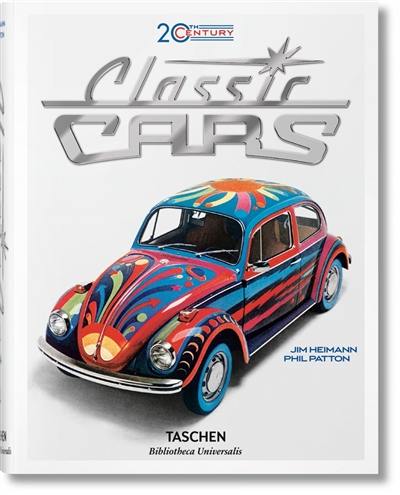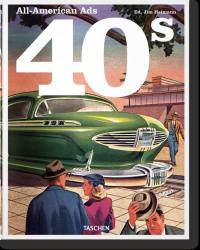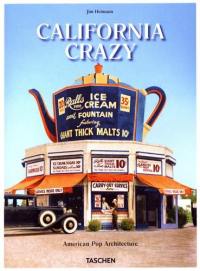
Fiche technique
Format : Relié sous jaquette
Nb de pages : 589 pages
Poids : 1108 g
Dimensions : 16cm X 21cm
ISBN : 978-3-8365-4615-7
EAN : 9783836546157
Classic cars, 20th century
100 years of automotive ads = 100 Jahre Autowerbung = 100 ans de publicité automobile
Quatrième de couverture
Moteurs d'histoire : des modèles T et DB5 à la coccinelle et au hummer
Henry Ford a inauguré l'ère automobile en présentant en 1908 la première voiture assemblée sur chaîne de montage : la Model T. Au cours du siècle suivant, l'automobile perd vite ses allures de bête de somme asthmatique pour adopter une silhouette quasi navale avec ses ailerons effilés, et devenir ensuite un symbole de statut social aux lignes de plus en plus épurées et lisses. Considérée au départ comme un gadget, la voiture est devenue une nécessité dans l'ère moderne, et un vecteur de liberté et d'horizons lointains.
20th Century Classic Cars met magnifiquement en image l'histoire de l'automobile, décennie après décennie, à travers plus de 400 publicités imprimées issues de la Collection Jim Heimann. Grâce à cette iconographie puisée dans un siècle d'images promotionnelles, ce livre retrace l'évolution de la voiture, du chariot sans chevaux aux fusées sur roues et au-delà. Avec son introduction et ses chapitres signés du spécialiste auto du New York Times Phil Patton et sa frise chronologique illustrée, cet ouvrage met en lumière les innovations technologiques, les principaux fabricants et vendeurs du secteur, et les replacent dans leur contexte historique, montrant comment la culture populaire a influencé la création automobile. Voyagez dans l'ère automobile, au fil d'une collection qui vous installe à la place du conducteur.
Wheels of history : from the model T and DB5 to the VW beetle and the hummer
Henry Ford jump-started the age of the automobile with the first assembly-line car in 1908 : the Model T. Over the next century the automobile evolved from chugging workhorse to tail fin-era showboat to sleek status symbol, complete with sleek hood ornament. Once a novelty item, the car grew into a necessity of the modern age, and a vector of freedom on the open road.
20th Century Classic Cars offers a lush visual history of the automobile, decade by decade, via 400-plus print advertisements from the Jim Heimann Collection. Using imagery culled from a century of auto advertising, this book traces the evolution of the auto from horseless carriage to rocket on wheels - and beyond. With an introduction and chapter text by New York Times automotive writer Phil Patton, as well as an illustrated timeline, this volume highlights the technological innovations, major manufacturers and dealers, historical events, and influence of popular culture on car design. Time-travel through the Automobile Age, with a collection that puts you in the driver's seat.
Autos, die geschichte schrieben : von model T und DB5 bis zu vm-k'afer und hummer
Henry Ford gab 1908 dem Automobilzeitalter mit seinemModel T, demersten Auto vom Fliebêtaband, den entscheidenden Impuls. Im Laufe des 20. Jahrhunderts wandelte sich das Auto von einer knatternden Arbeitsmaschine zu einem Hingucker mit Heckflossen und schliebêtalich zu einem stromlinienförmigen Statussymbol inklusive markanter Kühlerfigur. Das anfangs aïs technische Innovation bestaunte Auto wurde zu einer Notwendigkeit des modernen Lebens und zum Symbol der Freiheit schlechthin.
20th Century Classic Cars präsentiert anhand von über 400 Werbeanzeigen aus der Jim Heimann Collection Dekade für Dekade die rasante Geschichte des Automobils. Dokumentiert wird die Evolution des Autos von einer pferdelosen Kutsche zu einer Rakete auf Rädern. Eine Einleitung und pointierte Texte für jedes Kapitel von Phil Patton, Automobilspezialist der New York Times, sowie eine illustrierte Chronologie beleuchten technische Neuheiten, die wichtigsten Hersteiler und Händler, historische Ereignisse und den Einfluss der Popkultur auf das Design. Schnallen Sie sich an auf dieser rasanten Reise durch das Zeitalter des Automobils.















